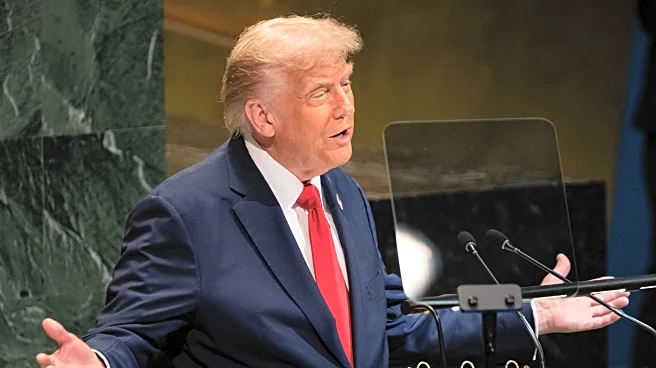What is the story about?
What's Happening?
President Trump is focusing on defense reform to expedite the delivery of weapons to U.S. warfighters, aiming to maintain a competitive edge over adversaries like China. His administration has initiated significant acquisition reforms, including the elimination of outdated processes and bottlenecks that delay the fielding of new capabilities. Trump has also established the U.S. Space Force to address the growing threats in space. The challenge now is to ensure these reforms are sustained and effective, requiring continuous presidential attention and accountability measures.
Why It's Important?
The reforms spearheaded by President Trump are crucial for maintaining the U.S. military's technological edge and operational readiness. By reducing procurement times and streamlining processes, the U.S. can respond more swiftly to emerging threats, particularly from nations like China. These changes could lead to faster deployment of advanced military technologies, enhancing national security. However, the success of these reforms depends on sustained focus and overcoming bureaucratic inertia, which has historically hindered defense innovation.
What's Next?
To ensure the reforms are effective, President Trump plans to hold regular 'Speed-to-Field' sessions at the White House, demanding accountability from program managers and service chiefs. He may appoint a White House Coordinator for Defense Reform to oversee the implementation of directives. Additionally, Trump is expected to push Congress to eliminate burdensome regulations that slow down defense processes. These steps are aimed at embedding a culture of speed and efficiency within the Department of Defense.
Beyond the Headlines
The broader implications of Trump's defense reform efforts include potential shifts in the Pentagon's risk-averse culture, encouraging bold solutions and innovation. The reforms also highlight the importance of immigration and federal-university partnerships in maintaining the U.S.'s military-technical edge. By fostering these collaborations, the U.S. can continue to attract global talent and drive technological advancements, countering China's growing influence.
AI Generated Content
Do you find this article useful?















